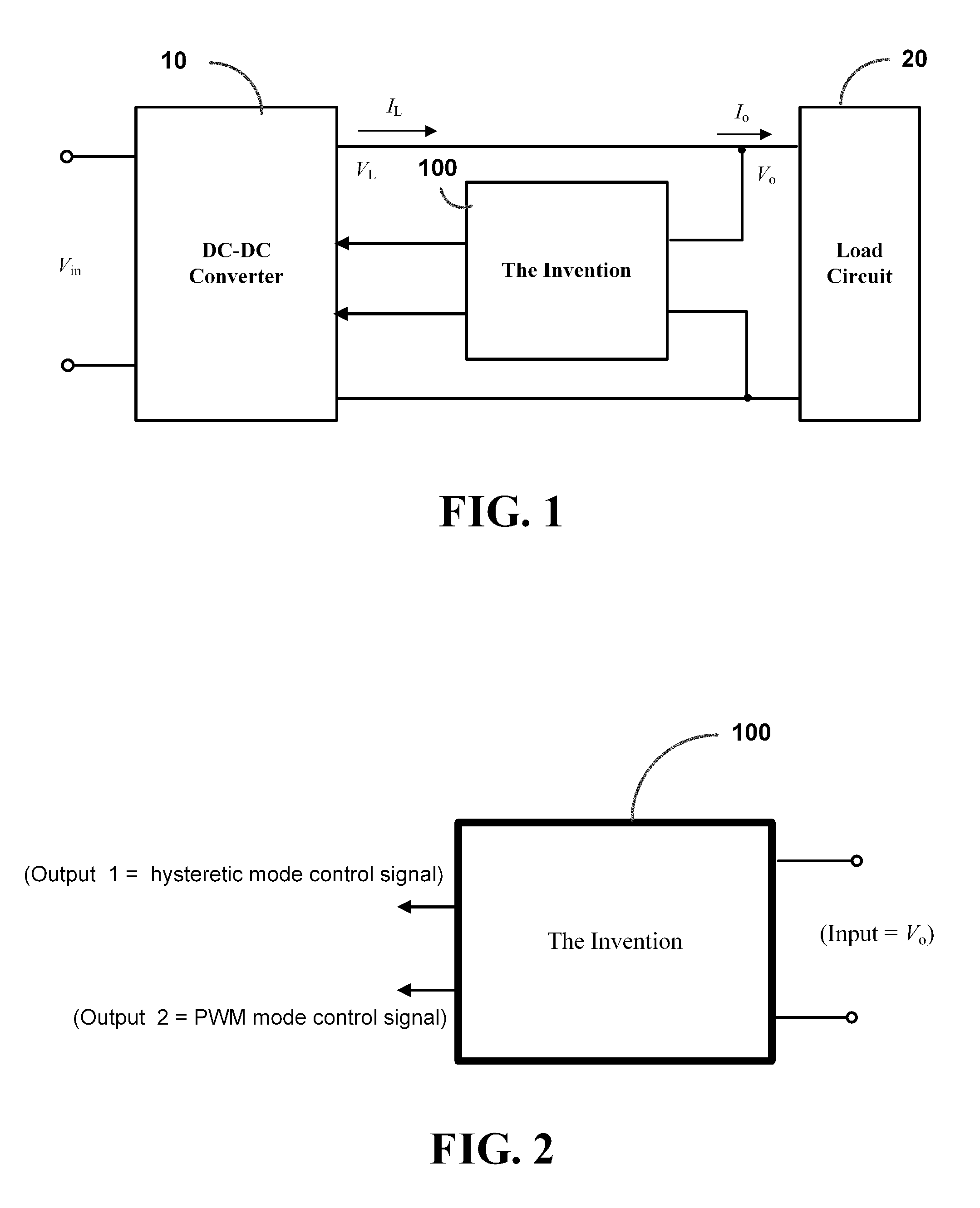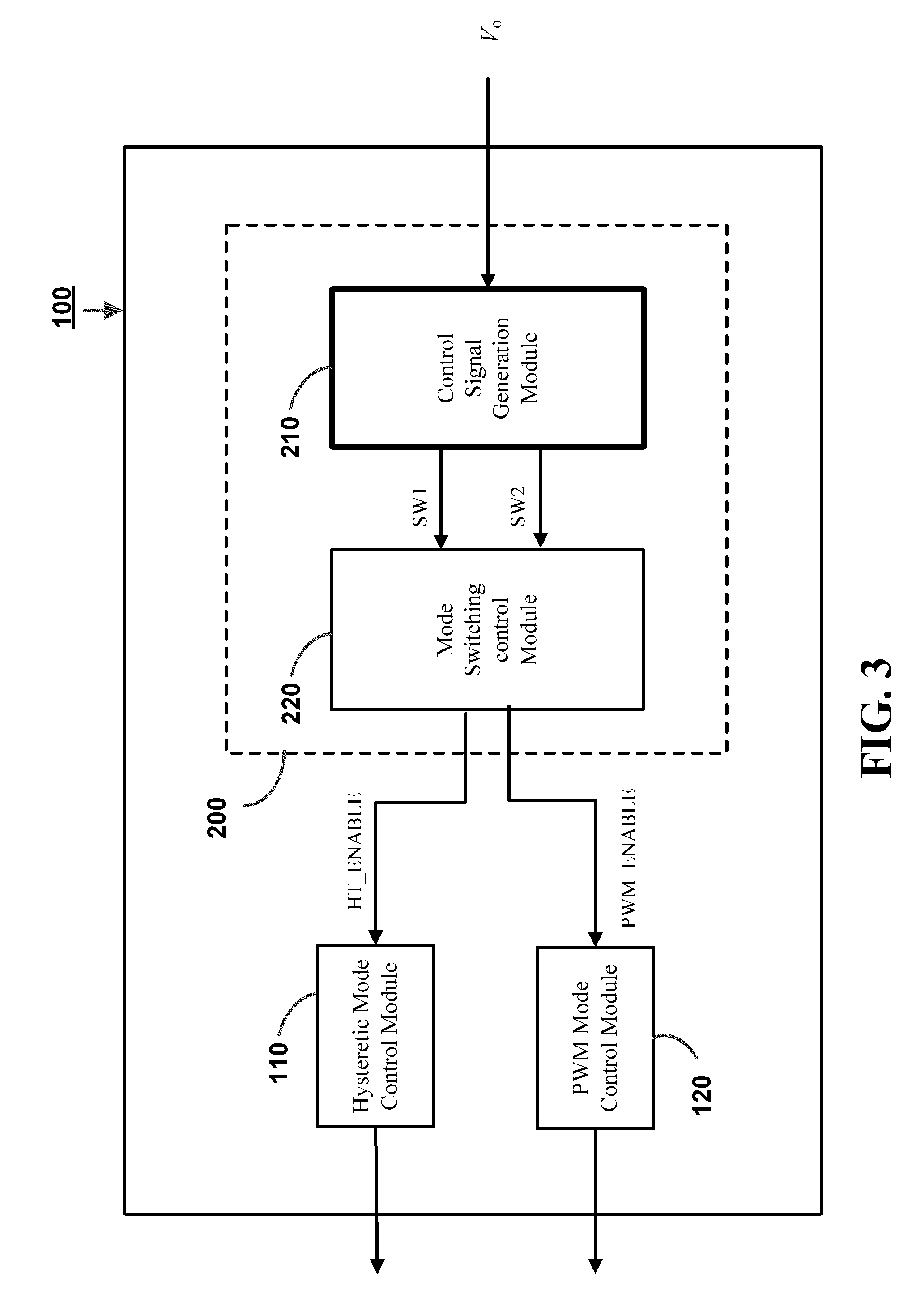Dual mode transient recovery control method of dc-dc converters
a control method and converter technology, applied in the field of electronic circuit technology, can solve the problems of increasing the overall manufacture reducing the efficiency of dc-dc converters, and reducing the overall manufacturing cost of dc-dc converters, so as to improve the noise immunity, improve the noise immunity level, and fast transient recovery of dc-dc converters
- Summary
- Abstract
- Description
- Claims
- Application Information
AI Technical Summary
Benefits of technology
Problems solved by technology
Method used
Image
Examples
Embodiment Construction
[0017]The dual mode transient recovery control method and system according to the invention is disclosed in full details by way of preferred embodiments in the following with reference to the accompanying drawings.
[0018]FIG. 1 is a schematic diagram showing an application of the dual mode transient recovery control system of the invention (which is here encapsulated in a box indicated by the reference numeral 100 and will be hereinafter referred to in short as “dual-mode transient recovery control system”). As shown, the dual-mode transient recovery control system of the invention 100 is designed for integration to a DC power output unit (such as a DC-DC converter 10) and a load circuit 20. The DC-DC converter 10 is used for converting an input DC voltage Vin in a DC-to-DC manner to thereby produce an output DC load voltage Vo and an DC output load current Io for the load circuit 20 (the actual load voltage and current received by the load circuit 20 are denoted by Vo and Io respect...
PUM
 Login to View More
Login to View More Abstract
Description
Claims
Application Information
 Login to View More
Login to View More - R&D
- Intellectual Property
- Life Sciences
- Materials
- Tech Scout
- Unparalleled Data Quality
- Higher Quality Content
- 60% Fewer Hallucinations
Browse by: Latest US Patents, China's latest patents, Technical Efficacy Thesaurus, Application Domain, Technology Topic, Popular Technical Reports.
© 2025 PatSnap. All rights reserved.Legal|Privacy policy|Modern Slavery Act Transparency Statement|Sitemap|About US| Contact US: help@patsnap.com



